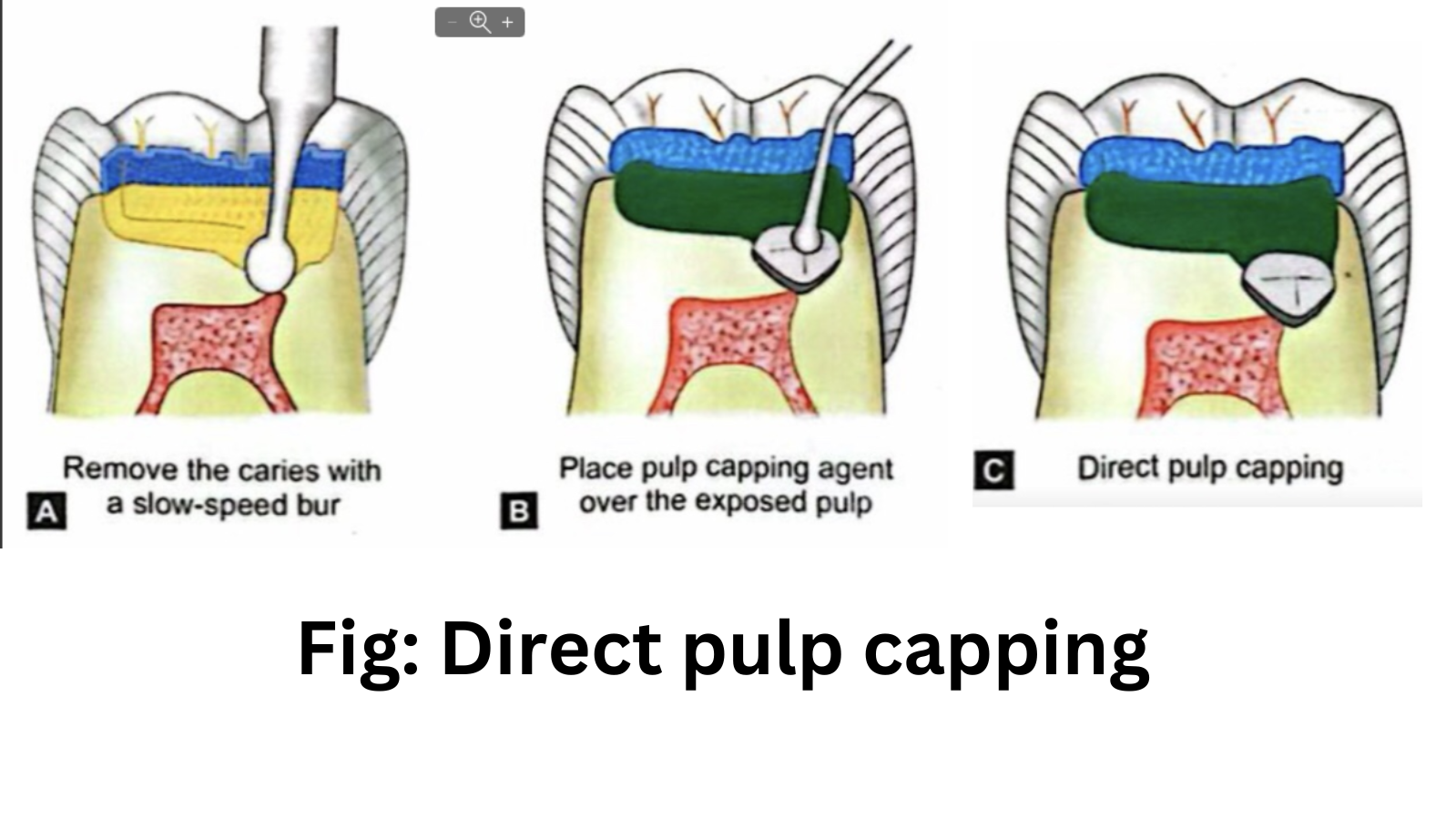Today in this article we will discuss regarding direct pulp capping and various aspects to it. As we know Pulp cap is a layer of lining or cement material placed on to a thin layer of dentine overlying a macroscopically unexposed pulp (Indirect pulp cap), or directly on to exposed pulp tissue (direct pulp cap) with the intention of presetving pulp vitality.
Direct pulp capping is defined as the placement of a medicament or non-medicated materials on a pulp that has been exposed in course of excavating the last portion of deep dentinal caries or as a result of trauma.
Objective:
- To create new dentin in the area of the exposure and subsequent healing of the pulp.
Indications:
- Small mechanical or traumatic exposures.
- If exposure is small less than 0.5 mm i.e True pin point.
- Patient is asymptomatic.
- Tooth where pulp is vital.
- Exposure have red hemorrhage that is easily controllable.
Contraindication:
- Severe toothache at night
- Spontaneous pain.
- Tender to percussion.
- Swelling/Fistula
- Pathologic mobility
- Root resorption - external/internal.
- Pulp calcification
- Pus or exudate from exposure site
- Periaphical / interradicular radiolucency.
Treatement Consideration:
- Debridgement : Every necrotic and infected dentin must be removed else they will be pushed into the exposed pulp during last stages of caries removal and delay healing and increases pulpal inflammation.
- Hemorrhage and Clotting : A blood clot should not be allowed to form. At the exposures site because that may impede pulpal healing or formation of reparative dentin.
- Bacterial Contamination : Once the caries and debris were removed from the exposure site, the cavity should be irrigated using saline, if not that will interfere in the healing.
- Exposure Enlargement: Exposure site must be enlarged because:
- It removes inflammation and injected tissue in the exposed area.
- It facilitates washing away carious and non-carious debris.
Technique of Direct Pulp Capping:
|
Proper Isolation is maintained using rubberdam. ↓ Following pulp exposure, further manipulation of pulp should be avoided. ↓ Cavity should be irrigated using saline or distilled water. ↓ hemorrhage is arrested using light pressure from sterile collon pellets. ↓ Pulp capping material is placed on the exposed pulp using minimal pressure. ↓ Place temporary restoration ↓ After the success of procedure : which is determined by dentinal bridge, maintenance of pulp vitality, lack of pain and minimal inflammatory response, final restoration is given and accordingly stainless steel crown placed. |

 Trishna Pokhrel
Trishna Pokhrel